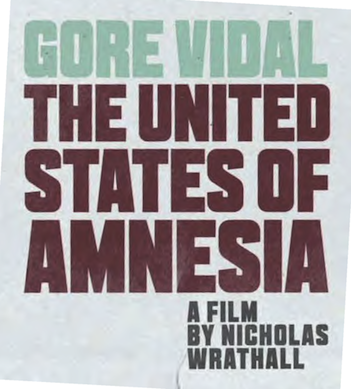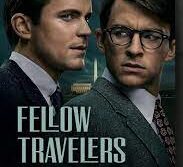THIS is being written close to a year after the demise of Gore Vidal on July 31, 2012. He outlived Norman Mailer and William F. Buckley, and he outlasted Truman Capote by a long shot. Doubtless this gave him some pleasure in his dotage, which nevertheless had its sad farewells. Some of the latter are observed in Nicholas Wrathall’s new documentary about Vidal’s life and career, Gore Vidal:  The United States of Amnesia, which screened at last June’s Provincetown International Film Festival (among other venues). The director spent many hours with Vidal in various locales (Los Angeles, New York, Cuba, and Ravello, Italy), conducting a series of interviews that form the backbone of the film, which also includes footage from Vidal’s many TV and movie appearances. (Be it noted that near the end of the film a portrait of Vidal is prominently displayed. It was painted by Juan Bastos for this magazine and graced its March-April 2007 cover.)
The United States of Amnesia, which screened at last June’s Provincetown International Film Festival (among other venues). The director spent many hours with Vidal in various locales (Los Angeles, New York, Cuba, and Ravello, Italy), conducting a series of interviews that form the backbone of the film, which also includes footage from Vidal’s many TV and movie appearances. (Be it noted that near the end of the film a portrait of Vidal is prominently displayed. It was painted by Juan Bastos for this magazine and graced its March-April 2007 cover.)
The above-named writers all make an appearance in the film—all three were parties to famous feuds with Vidal—along with countless other well-known writers and celebrities with whom Vidal socialized. Here one has to acknowledge that many of his friendships—with everyone from Tennessee Williams to the Kennedys to Paul Newman and Joanne Woodward—were as enduring as were his rivalries. Vidal reminisces in the film about these lives and times, starting with his childhood as the son of a prominent airline tycoon and public servant and the grandson of a Tennessee senator. We learn about his service in World War II and his torrid friendship with a boy named Jimmie Trimble, who died in the War and became a permanent part of Vidal’s personal mythology.
By that time Vidal had already tried his hand at writing fiction, and by 1948 he was publishing the groundbreaking gay classic The City and The Pillar (about which a separate piece appears on page 22). The book was a breakthrough not only for its depiction of an intimate relationship between two men but also for the fact that Vidal had effectively outed himself at the tender age of 22, a decision that would affect the rest of his literary career. And yet, for all his precocious outness, Vidal was always curiously coy about this very subject, never quite owning up to the label “gay” and eschewing an active role in GLBT politics. He had a lifelong partner, Howard Austen, who died shortly before the film was shot, but claimed they had no sexual relationship after the first night, which is why they lasted so long.
Vidal would go on to write two gonzo bestsellers, Myra Breckinridge and Myron, which dealt with transsexuality in a way that would probably be considered politically incorrect today. But for the most part he stuck to the historical novels (Burr, 1876, Hollywood, Julian, and so on) and never returned to the themes of The City and the Pillar (which he revised many years later). Still, one has to believe that being gay was instrumental in his decision to reject his elite upbringing and become a gadfly to the rich and powerful, an outsider, a “traitor to his class.” Indeed, what may be Vidal’s most important legacy was his exposé of the inner workings of power and wealth, and his relentless critique of their concentration in the U.S.—what he saw as a shadow plutocracy that rendered the political parties and processes largely irrelevant.
Gore Vidal is Nicholas Wrathall’s second documentary, and he has been a producer of several films since 1999. This interview was conducted via e-mail by the GLR editor in late June.






